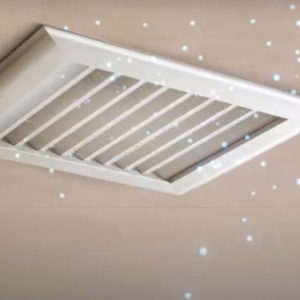Recently, outdoor air quality has gotten plenty of attention. People realize that emissions from cars, industrial buildings, and other pollution sources can have a significant impact on long-term health.
What people might not realize, however, is that indoor air quality is just as important!
First and foremost, the average New Yorker spends more time indoors than outdoors – that alone serves as a clue just how important it can be. But, small enclosed spaces like offices present their own special challenges: Indoor air can actually be even more polluted than outdoor air.
Indoor Air Pollution: Understanding the Risks
Indoor air pollution can arise from many sources. Most importantly, irritants can be tracked inside any virtually any building, no matter how carefully the indoor environment is controlled.
Pollen, dirt, dander, and other pollutants that can become airborne may cause employees and tenants to suffer health issues.

Over time, air circulation issues can make these problems more serious. For example, allergens can become trapped in a building’s ductwork, reducing airflow and further irritating personnel.
Severe Performance Issues Attributed to On-Going Indoor Air Quality Issues:
- Employees and visitors are more likely to suffer from sinus and respiratory problems;
- Reduced air circulation can lead to transient symptoms like headaches and discomfort;
- energy costs for both heating and cooling applications rise as circulation is restricted;
- It may be more difficult to maintain standards necessary for regulatory compliance.
Managing Indoor Air Quality: Your HVAC System is the Key
The impact of poor indoor air quality can take some time to be felt, and it may not produce obvious symptoms right away. However, it’s worth being proactive to raise air quality before problems are reported – otherwise, it can cost the equivalent of thousands of productive hours each year.
Your HVAC system should be the major point of focus for any strategy to improve indoor air quality.
In most cases, it’s not necessary to upgrade or refit an HVAC system to improve its airflow qualities. Instead, you should pursue a proactive schedule of preventive maintenance to ensure ductwork is kept clean and unobstructed. Other components should also be periodically tested and fine-tuned.
When you are attentive to indoor air quality, the people who depend on your building can breathe easy. To learn more, contact Donnelly Mechanical – New York City’s top team for commercial HVAC systems.